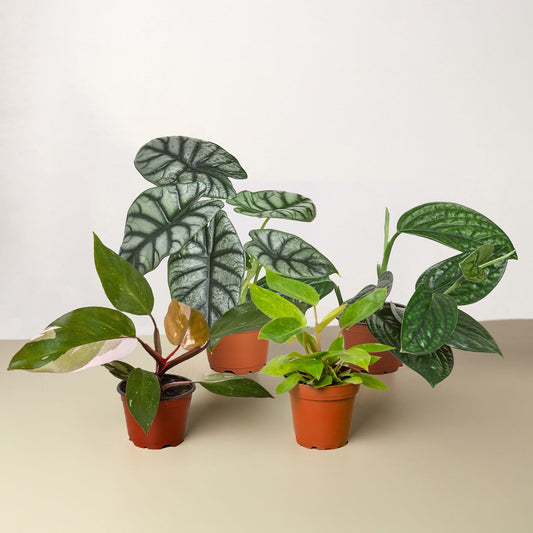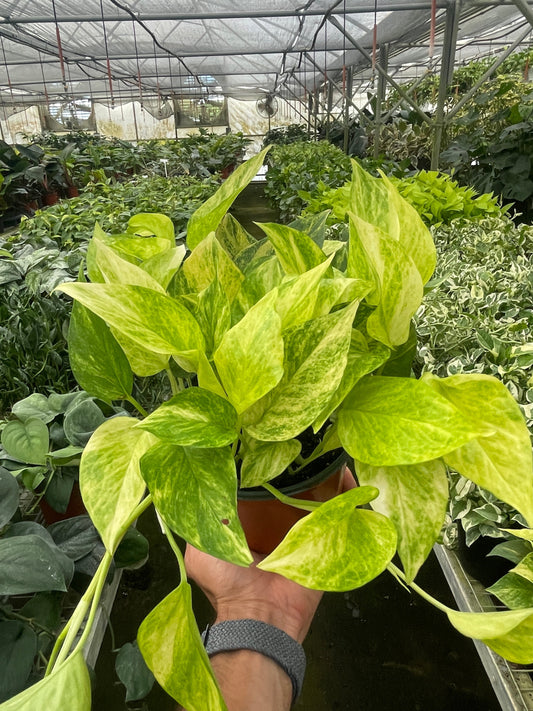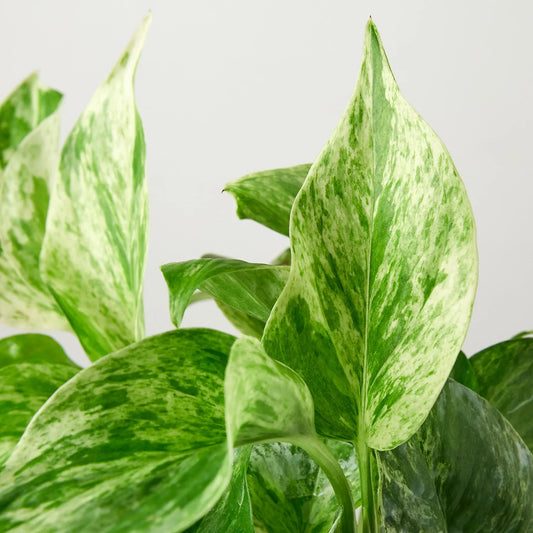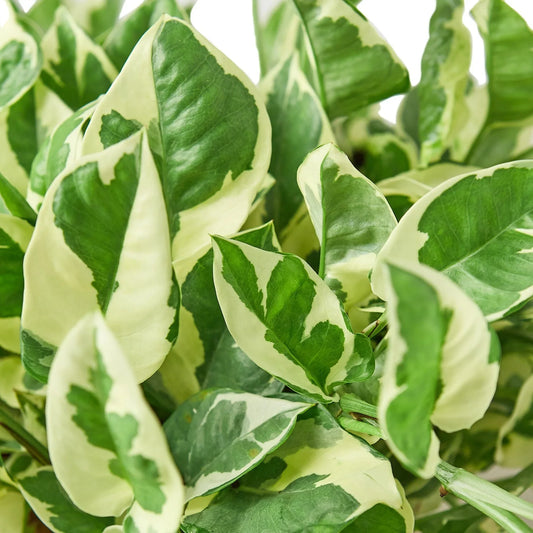Why Is My Parlor Palm Falling Over?
Cafe Planta Team
Have you ever found yourself puzzled over why your once-stately parlor palm is now leaning like the Tower of Pisa? It’s a common concern among plant parents who love these elegant, low-maintenance houseplants. Not to worry, though—there are several reasons your parlor palm might be falling over, and plenty of ways to help it stand tall again.
In this article, we’ll take a closer look at the potential reasons for your parlor palm's predicament. From improper watering to insufficient light, we’ll explore what's going on and how you can turn things around for your green friend. Let’s dig in and get your parlor palm back on track!
Watering Woes: Too Much or Too Little?
Watering issues are often at the heart of many houseplant problems, and parlor palms are no exception. These palms prefer to have their soil evenly moist but not soggy. Overwatering can lead to root rot, which weakens the plant’s stability, causing it to topple over. On the flip side, underwatering can result in a brittle stem that’s unable to support the weight of the plant.
Signs of Overwatering
- Yellowing leaves
- Mushy or soft stems
- A musty smell from the soil
Signs of Underwatering
- Brown, crispy leaf tips
- Wilted appearance
- Dry, compact soil
To find the right balance, start by checking the top inch of the soil with your finger. If it feels dry, it’s time to water. Remember, consistency is key. Parlor palms thrive on routine, so try to stick to a watering schedule that fits their needs.
Inadequate Light: Shedding Some Light on the Problem
Parlor palms are pretty flexible when it comes to lighting conditions, but they do best in bright, indirect light. If your plant is leaning or falling over, it might be stretching towards a light source, a phenomenon known as phototropism. This can cause the plant to become unbalanced over time.
Signs of Insufficient Light
- Leaves turning pale or yellow
- Slow growth
- Stem leaning towards the nearest light source
To fix this, try rotating your plant every week, ensuring all sides receive equal exposure to sunlight. You might also consider moving it closer to a window or using a grow light to supplement its light intake. This can help your palm maintain its upright stance and promote even growth.
The Right Pot and Soil: A Firm Foundation
The pot and soil you use play a crucial role in the health and stability of your parlor palm. If the pot is too large or small, the plant might struggle to stay upright. Similarly, the wrong type of soil can either retain too much moisture or drain too quickly.
Choosing the Right Pot
- Size: The pot should be slightly larger than the root ball.
- Material: Terracotta pots are great for their breathability, helping prevent overwatering.
- Drainage: Ensure your pot has drainage holes to prevent water from pooling.
Picking the Right Soil
- Well-draining soil is essential. Consider a mix designed for palms or a general-purpose potting mix with added perlite or sand.
- Avoid heavy, clay-based soils that can retain too much moisture.
Repotting your parlor palm every 2-3 years can help refresh the soil and provide room for growth, contributing to a sturdier plant.
Feeding Your Palm: Getting the Nutrients Right
Like all living things, parlor palms need the right nutrients to grow strong and healthy. A lack of nutrients can weaken the plant’s structure, making it more prone to falling over.
Signs of Nutrient Deficiency
- Pale or yellowing leaves
- Slow growth
- Weak stems
During the growing season, typically spring and summer, feed your parlor palm with a balanced liquid fertilizer every four to six weeks. Be careful not to over-fertilize, as this can lead to salt buildup in the soil, further stressing the plant.
Pest Problems: Unwanted Visitors
Pests such as spider mites, scale, and mealybugs can weaken your parlor palm, making it more susceptible to falling over. These little invaders sap the plant’s nutrients, leading to wilting and structural weakness.
Common Pests and How to Spot Them
- Spider Mites: Look for webbing on leaves and tiny moving dots.
- Scale: Look for brown or black bumps on stems and leaves.
- Mealybugs: Look for white, cottony masses on the plant.
If you spot any of these pests, act quickly to remove them. You can use insecticidal soap or neem oil, applying it as directed to the plant. Regularly checking your plant for pests can also help catch any infestations early.
Structural Support: When and How to Stake
Sometimes, your parlor palm might need a little help standing tall. Staking can provide temporary support while you address the underlying issues.
When to Stake Your Palm
- If the plant is newly repotted and needs time to establish roots
- If the plant is temporarily top-heavy
- If you’re in the process of correcting light or water issues
To stake your plant, use a bamboo stake or similar support. Insert it into the soil near the base of the plant, and gently tie the stem to the stake with soft ties, like fabric strips or plant ties. Be sure not to tie too tightly, as this can damage the plant.
Environmental Stress: Temperature and Humidity Concerns
Parlor palms thrive in temperatures between 65°F and 80°F (18°C to 27°C) and prefer a humid environment. Drastic changes in temperature or low humidity can stress the plant, leading to drooping or falling over.
Signs of Environmental Stress
- Brown leaf tips
- Wilting or drooping
- Leaf loss
To mitigate this, try to maintain a stable environment for your parlor palm. Use a humidifier or place a tray of water near the plant to increase humidity. Avoid placing your plant near drafty windows, heaters, or air conditioners, as these can lead to rapid temperature fluctuations.
Repotting Issues: Handling with Care
Repotting can be a stressful experience for any plant, and if not done carefully, it can contribute to your parlor palm falling over. Handling the roots too roughly or planting too deeply can destabilize the plant.
Steps for Successful Repotting
- Choose the right pot size, as mentioned earlier.
- Gently remove the plant from its current pot, taking care not to damage the roots.
- Place the plant in the new pot, ensuring it’s at the same soil level as before.
- Fill in with fresh soil, gently pressing down to eliminate air pockets.
- Water thoroughly and place it in a suitable location.
After repotting, give your parlor palm a few weeks to adjust to its new home. It may experience some shock, but with time and proper care, it should recover and regain its upright posture.
Root Health: The Hidden Factor
Healthy roots are vital for a stable, upright parlor palm. If your plant is constantly falling over despite your best efforts, it might be time to check the roots.
Signs of Root Issues
- Black, mushy roots are a sign of root rot.
- Roots growing through drainage holes indicate it’s time for repotting.
- Lack of new growth may suggest root-bound conditions.
To assess root health, gently remove the plant from its pot and inspect the root system. Trim away any unhealthy roots and repot the plant in fresh soil if necessary. Healthy roots should be white or light tan and firm to the touch.
Final Thoughts
There are many factors that could cause your parlor palm to fall over, from watering missteps to pest problems. By understanding these common issues and addressing them with care, you can help your parlor palm stand proud and healthy once again.
At Cafe Planta, we’re here to support you on your plant journey. Whether you’re looking for a new plant friend or need advice on care, we’re just an email or a DM away. We love sharing our passion for plants and hope to help you create a thriving indoor garden. Happy planting!



















